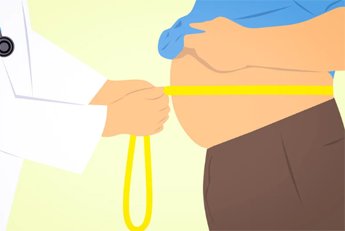Belly Fat: What It Really Means for Your Health
When it comes to belly fat, most people see it as just a cosmetic concern. But the truth is, the location of fat in your body matters far more than how it looks. Research shows that fat stored deep in your abdomen — also known as visceral fat — poses far greater health risks than the subcutaneous fat just beneath your skin.


Subcutaneous Fat vs. Visceral Fat
Subcutaneous fat makes up about 90% of body fat and is stored right under the skin. When you poke your belly and feel softness, that’s subcutaneous fat.
Visceral fat, on the other hand, accounts for only about 10% of total fat but is far more dangerous. It lies deep inside your abdominal cavity, surrounding your liver, intestines, and other vital organs.
Unlike subcutaneous fat, visceral fat behaves like an endocrine gland, releasing proteins and chemicals that disrupt your health. It produces cytokines, which trigger inflammation, a key risk factor for heart disease, diabetes, and even high blood pressure.
Health Risks of Abdominal Obesity
Excess visceral fat, often linked to abdominal obesity, is strongly associated with:
It is important to note that the so-called “beer belly” isn’t caused by beer alone. Studies, including one from the Czech Republic, show that alcohol consumption does not directly correlate with waist size. Instead, it’s overall excess calories and fat storage that drive abdominal obesity.
How to Measure Belly Fat at Home
A simple tape measure can help you track your visceral fat levels. Measure your waistline at the navel (not the narrowest part of your torso).
For men:
For women:
If your waistline falls in the danger zone, it’s best to consult a doctor to rule out underlying causes.
Strategies to Reduce Belly Fat and Improve Health
-
✅ Keep weight gain in check – Focus on slow, sustainable weight loss rather than crash diets.
-
✅ Stay physically active – Even light activity like walking regularly can improve metabolic health.
-
✅ Add strength training – Building muscle mass helps your body burn more calories even at rest.
-
✅ Control blood sugar – Regular exercise and a balanced diet reduce the risk of insulin resistance and diabetes.
In Summary
Subcutaneous fat may be less harmful, but visceral belly fat is a hidden danger. By maintaining a healthy waistline with consistent exercise, balanced nutrition, and weight management, you can significantly lower your risk of heart disease, diabetes, and other life-threatening conditions.
Read further on:
≺≺ Which food is most associated with helping people live longer?
≺≺ Is Plant-Based Protein the Key to a Longer, Stronger Life?
≺≺ How important is fiber in the diet?
≺≺ What role do probiotics play in the diet?
≺≺ What Is the Ketogenic Diet? Is the Keto Diet Right for Everyone?
≺≺ What cardiovascular benefits do berries provide?
≺≺ What is the Okinawan diet? What is the secret behind Okinawan long life-expectancy?
≺≺ Ultra-Processed Foods: What They Are, Why They’re Harmful, and How to Cut Back.
≺≺ What grains have the lowest glycemic index?
≺≺ How Important Is Protein for Your Health?
≺≺ is your kid getting too much protein?
≺≺ What foods and vitamins are good for your skin?
≺≺ EWG’s- The Clean Fifteen: Fruits and Vegetables with the Lowest Pesticide Levels.
≺≺ What eating strategies work best for losing weight long term?
≺≺ How Do Sugary Meals and Beverages Harm Dental Health?
≺≺ Why Vitamin B12 Is Important for Your Health?
≺≺ What foods should people with high blood pressure avoid?
≺≺ Why is regular table salt considered unhealthy?
≺≺ What food is most effective for moderating blood sugar?
≺≺ What are antioxidants? How antioxidants in the fruits and vegetables help in preventing cancers and diseases?
≺≺ How can I reduce the risk of cancer-causing chemicals when cooking or grilling meat?
≺≺ What happens to my blood vessels when I gain weight?
≻≻ Watch this page for more such informative articles on Health, Nutrition, and Wellness.
≻≻-Back to Home page.
Further reading (External Links opens in new window):
≺≺- Harvard Health Publishing – Taking aim at belly fat.

